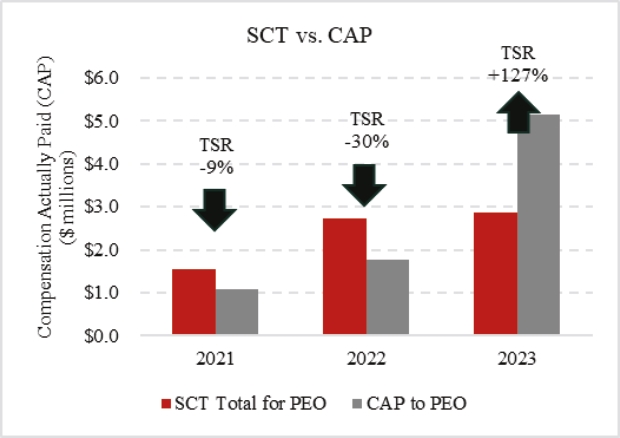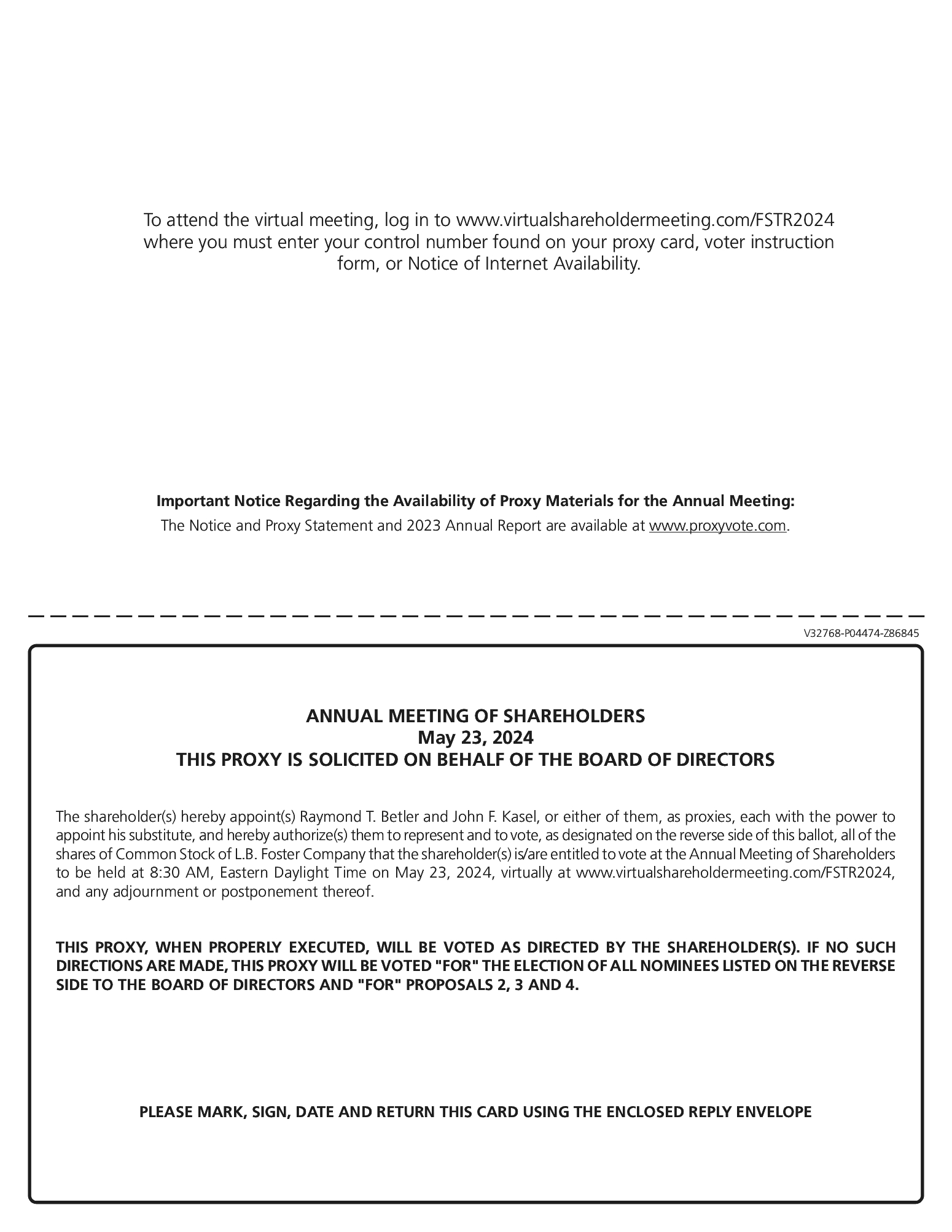(1)
| With respect to restricted stock, Mr. Bauer received distributions of, 6,279 shares on February 20, 2021 at $17.63 (closing price on February 19, 2021, the last preceding business day) per share, 5,384 shares on February 21, 2021 at $17.63 (closing price on February 19, 2021, the last preceding business day) per share, 2,558 shares on February 22, 2021 at $17.53 (closing price on that day) per share, 36,803 shares on December 31. 2021 at $13.75 (closing price on that day) per share; Mr. Kasel received distributions of 3,7504,604 shares on February 14, 202117, 2023 at $16.40$12.81 (closing price on February 12, 2021, the last preceding businessthat day) per share, 2,512 shares on February 20, 20212023 at $17.63$12.81 (closing price on February 19, 2021, the last preceding business day), 1,901 shares on February 21, 2021 at $17.63 (closing price on February 19, 2021,17, 2023, the last preceding business day) per share, 8634,092 shares on February 22, 202126, 2023 at $17.53$12.80 (closing price on that day) per share; Mr. Kempton received a distribution of 534 shares on February 20, 2021 at $17.63 (the closing price on February 19, 2021,24, 2023, the last preceding business day) per share; Mr. Thalman did not receive anyreceived distributions of restricted stock in 2021; Mr. Lippard received a distribution of 2,5002,302 shares on February 14, 202117, 2023 at $16.40$12.81 (closing price on that day) per share, 1,925 shares on February 26, 2023 at $12.80 (closing price on February 12, 2021,24, 2023, the last preceding business day) per share, 1,2565,000 shares on February 20, 2021March 1, 2023 at $17.63 (closing price on February 19, 2021, the last preceding business day) per share, 1,109 shares on February 21, 2021 at $17.63 (closing price on February 19, 2021, the last preceding business day) per share, 512 shares on February 22, 2021 at $17.53$12.46 (closing price on that day) per share; Mr. Guinee received a distribution of 3,7502,110 shares on February 14, 202117, 2023 at $16.40$12.81 (closing price on February 12, 2021, the last preceding businessthat day) per share, 1,444 shares on February 20, 20212023 at $17.63$12.81 (closing price on February 19, 2021,17, 2023, the last preceding business day) per share, 1,2671,925 shares on February 21, 202126, 2023 at $17.63$12.80 (closing price on February 19, 2021,24, 2023, the last preceding business day) per share, 544 shares on February 22, 2021 at $17.53 (closing price on that day) per share; and Mr. Kelly received distributions of 3,7501,918 shares on February 14, 202117, 2023 at $16.40$12.81 (closing price on February 12, 2021, the last preceding businessthat day) per share, 1,444 shares on February 20, 20212023 at $17.63$12.81 (closing price on February 19, 2021,17, 2023, the last preceding business day) per share, 1,2671,610 shares on February 21, 202126, 2023 at $17.63$12.80 (closing price on February 19, 2021,24, 2023, the last preceding business day) per share; and Mr. Treacy received a distribution of 1,304 shares on February 17, 2023 at $12.81 (closing price on that day) per share, 1,005 shares on February 20, 2023 at $12.81 (closing price on February 17, 2023, the last preceding business day) per share, 5441,190 shares on February 22, 202126, 2023 at $17.53$12.80 (closing price on thatFebruary 24, 2023, the last preceding business day) per share. With respect to the 2018-2020 PSUs which underlying performance conditions were certified by the Compensation Committee of the Board of Directors as having been achieved and the shares distributed on February 17, 2021, Mr. Bauer received a distribution of 3,452 shares, Mr. Kasel received a distribution of 1,165 shares, Messrs. Kempton and Thalman did not receive a distribution of shares with respect to the 2018-2020 PSUs, Mr. Lippard received a distribution of 690 shares, Mr. Guinee received a distribution of 734 shares, and Mr. Kelly received a distribution of 734 shares, each at $17.82 (closing price on that day). Please see the Outstanding Equity Awards at 20212023 Fiscal Year End table for a discussion of the 2019-20212021-2023 PSU awards; those underlying performance conditions were certified by the Compensation Committee of the Board of Directors as having been achieved and the shares distributed in 2022.2024. |























